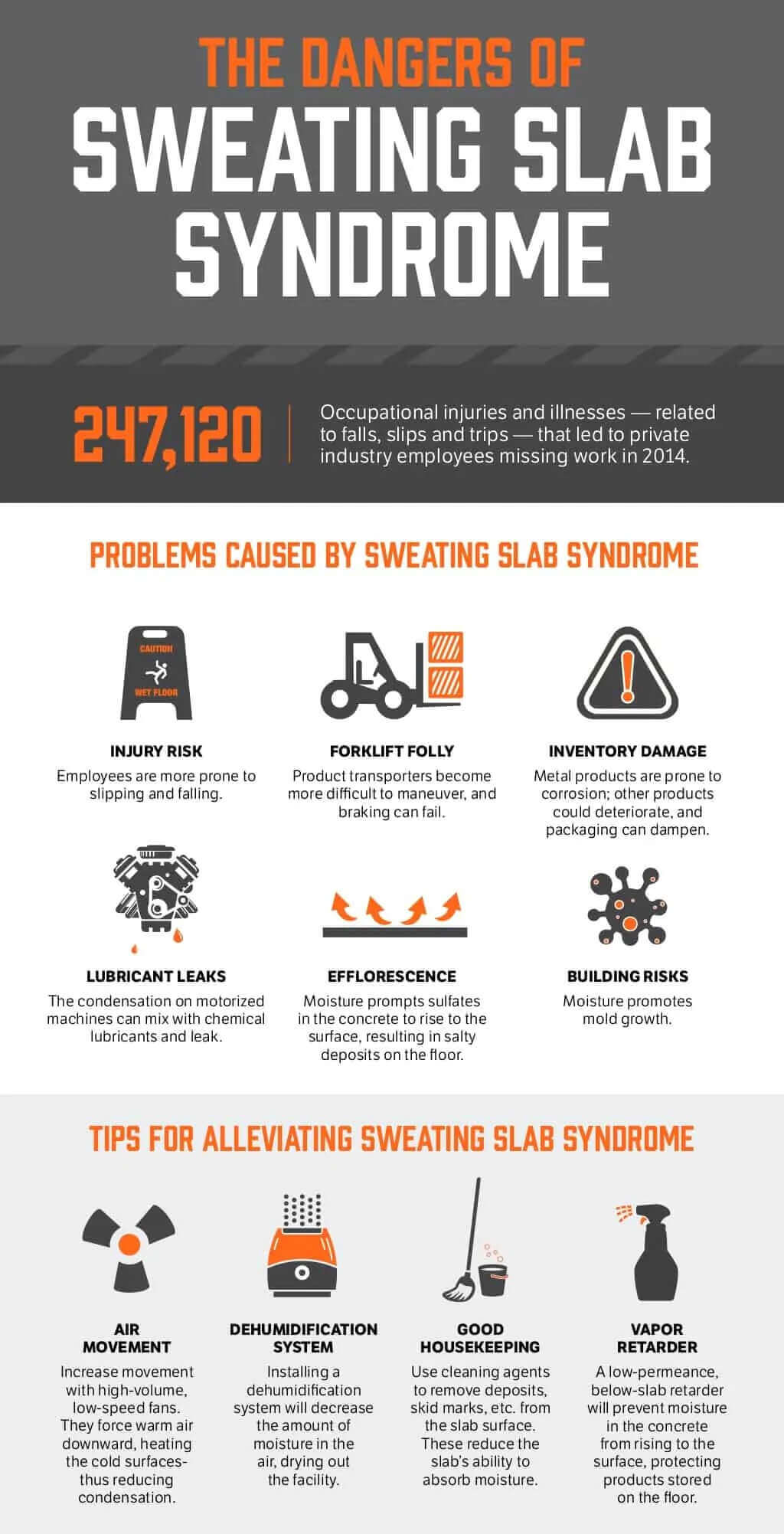Sweating Slab Syndrome


The Dangers Of Sweating Slab Syndrome
If “sweating slab syndrome” sounds sinister, it’s because it is. Slick concrete floors in industrial facilities or similar buildings can lead to serious injuries due to employees slipping — and profits could subsequently slip as well if the problem persists. Forklifts and water puddles don’t mix, either. Forklifts are meant to run between racks, not run into wrecks.
Sweating slab syndrome is characterized by the regular formation of condensation on a concrete floor. It tends to occur where humidity fluctuates, such as in facilities located in regions where temperatures change drastically, from cool nights to warm days. Warm, moist air contacts a cold surface, and the trouble begins. In addition to causing falls and forklift mishaps, the persistent presence of moisture can damage inventories (especially if metal is involved) and the floor itself. Moisture often promotes mold growth as well.
The accompanying infographic outlines some of the top safety issues associated with sweating slab syndrome, along with some tips to alleviate the problem. The Occupational Safety and Health Administration (OSHA) says that most slips, trips and falls are preventable, and recommends using adequate ventilation as one way to prevent condensation from forming on the floor.

